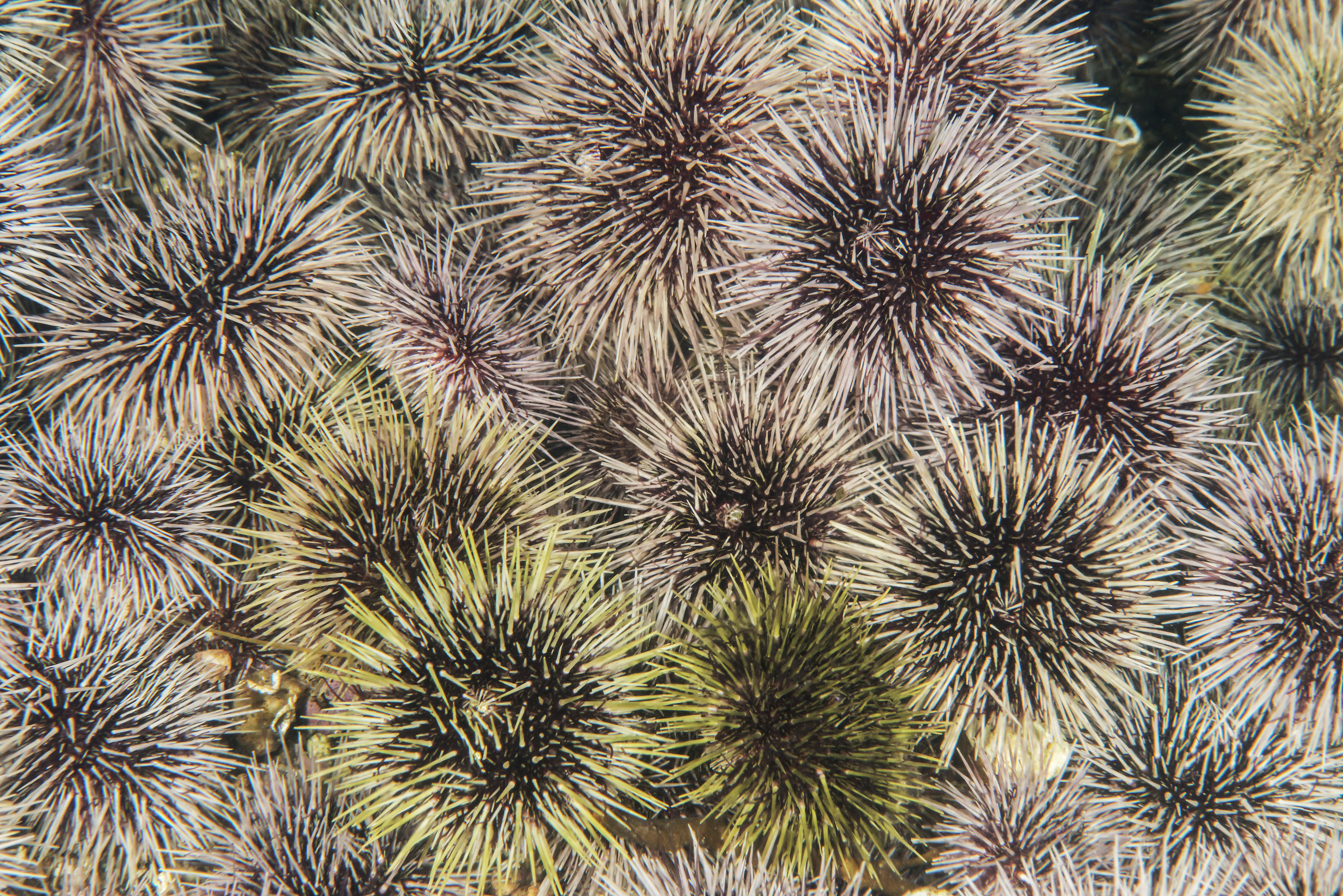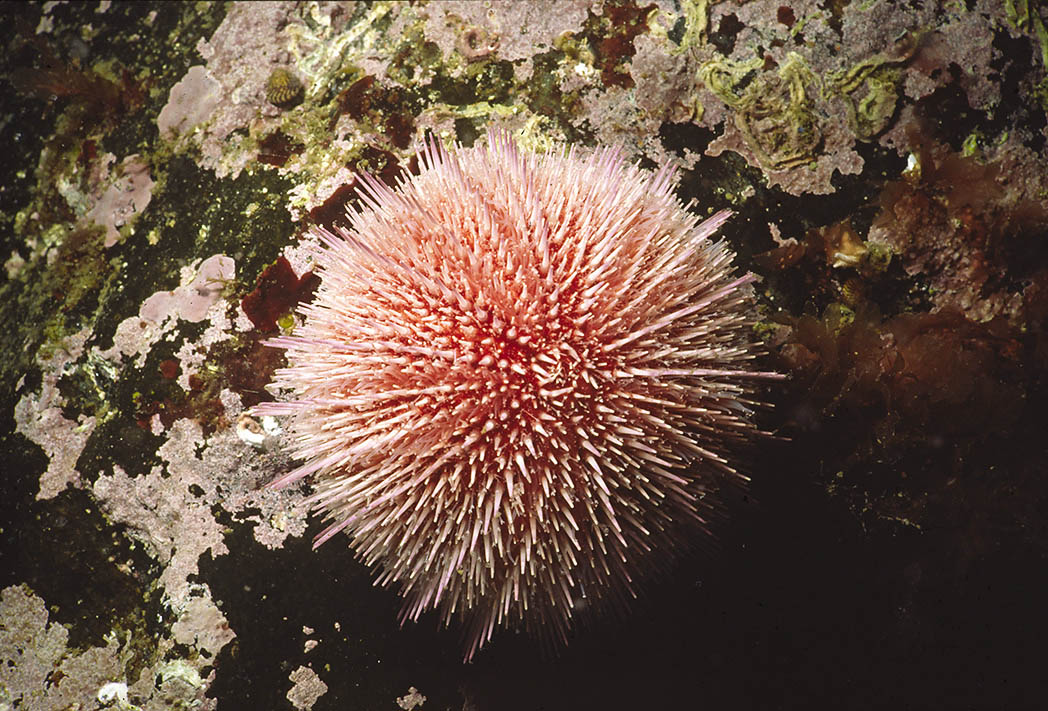Topic: Sea urchins
Red sea urchins (Echinus esculentus)
Photo: Erling Svensen / IMR(Echinus esculentus)
Photo: Maria Jenssen / IMRPublished: 28.03.2019 Updated: 21.09.2022
The series of Echinodermata is divided into five classes, and Echinoidea is one of them. Echinoidea means "like a hedgehog", and naturally alludes to the spiky body wall. There are two types of Echinoidea: those with irregular body shape (sea mice) and those with regular body shape (sea urchins).
In Norway, the red (Echinus esculentus) and the green (Strongylocentrotus droebachiensis) are most common. The green, also called Drøbak sea urchin, is the most prolific grazer of the two, and may graze barren entire kelp forests as it has in coastal areas of Northern Norway. It can be found in relatively shallow water, but it is recorded down to a depth of about 1200 metres.

The Drøbak sea urchin is circumpolar and is widespread in the north of the Atlantic, Pacific, and Arctic oceans. It can be found along the entire Norwegian coast, most often on hard bottoms.
Sea urchins feed on seaweed, seagrass, silica algae (diatoms), other evertebrates (including cannibalism), rotting material and restrained algae. The algae are scraped from the substrate with a mouthpiece, called the "Lantern of Aristotle" (there are five large lime plates inside the body cavity, shaped like a pyramid).
The sea urchins are specially gendered, i.e. there are male and female individuals.

